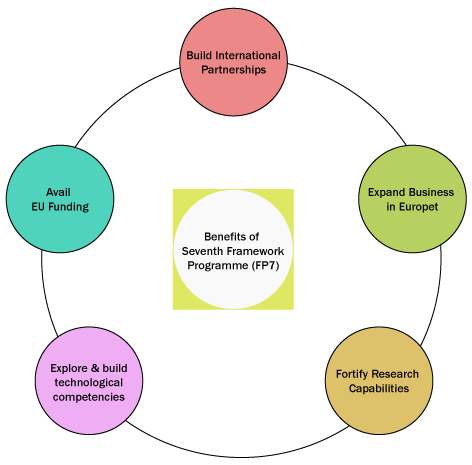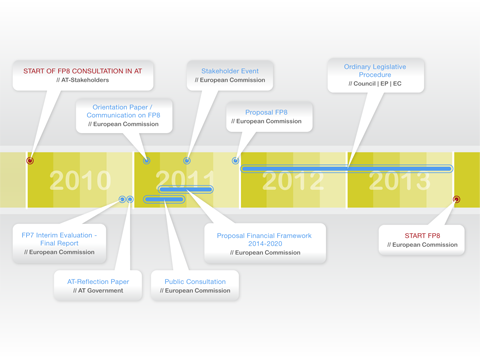European commission FP7 ICT Programme “Technology Enhanced Learning” call is focusing on the use of information and communication technologies that can support innovation and drive change in education environments. The technology-enhanced learning call sits within the ICT Challenge 4 on Digital Libraries and Content, which is more generally about the ways in which digital content is changing the way we live and specifically the way we learn:
“More abundant, accessible, interactive and usable content and knowledge, coupled with shifts in demands (future of education and training systems, productivity, time to competency, focus on intangible assets) contribute to reshaping the way we learn: teaching methods are increasingly focusing on inquiry-based, problem-solving approaches; technologies are suggesting new ways to generate learners’ engagement and motivation and to support innovation and creativity; learning is increasingly integrated into business processes, corporate knowledge management and human resources systems. The research is becoming intrinsically cross disciplinary, requiring input from cognitive and social sciences, pedagogy, computer and neurosciences.”
The Work Programme identifies number of target outcomes which proposals to this call will need to address (see below):
Objective ICT-2011.8.1 Technology-enhanced learning
Target outcomes
a) Technology Enhanced Learning systems endowed with the capabilities of human tutors. Research should advance systems’ capabilities to react to learners’ abilities and difficulties, and provide systematic feedback based on innovative ways of interpreting the user’s responses – particularly in relation to deep/shallow reasoning and tinking. Research should advance systems’ understanding and use of the appropriate triggers (praise, constructive comments, etc.) influencing learning. The systems shall improve learners’ meta-cognitive skills, understand and exploit the underlying drivers of their learning behaviours. Solutions should exploit advances in natural language interaction techniques (dialogues), in rich and effective user interfaces and should have a pedagogically sound, smart and personalised instructional design (STREP).
b) Educational technologies for science, technology and maths: (b1) Supporting students to understand and construct their personal conceptual knowledge and meaning of scientific, technological and/or mathematical subjects. Technological solutions should take the learners through the complexity of a subject, activating and feeding curiosity and reasoning, and support the creative applications of the theory. (STREP; NoE) (b2) Supporting European-wide federation and use of remote laboratories and virtual experimentations for learning and teaching purposes. The service shall enable online interactive experimentations by accessing and controlling real instruments, or using simulated solutions. Open interfacing components for easy plug-and-play of remote and virtual labs should be made available to stimulate the growth of the network of labs. Research shall include work on the user interfaces that mediate the complexities of creation and usability of experiments, for specific pedagogical contexts in primary and secondary schools and higher education, including at university level. This part of the target outcome should be pursued by IPs that include large scale pilots.
c) Advanced solutions for fast and flexible deployment of learning opportunities at the workplace (targeting, in particular, SMEs): enable faster, situated, just-in-time up-/re-skilling, and lower the costs/efforts of developing and maintaining quality instructional material to be used in continuing education and training processes. Solutions should aim at creating a networking environment that fosters cross-rganisational learning and that will helpSMEs to adopt and sustain effective learning attitudes. Proposals must include research on novel business training models, and on how to overcome organisational, inter-organisational and individual barriers to widespread adoption of the developed technologies. This target outcome focuses specifically on the needs of SMEs in sectors without an established tradition in the adoption of learning solutions and facing innovation and competitiveness challenges deriving from efficiency needs or new processes/products development. Proposals should include SMEs and relevant professional associations. SMEs shall also be the final users of the solutions, and be actively involved in clearly justified, representative and sizeable pilots. (IP)
d) Computational tools fostering creativity in learning processes: innovative tools encouraging nonlinear, non-standard thinking and problem-solving, as well as the exploration and generation of new knowledge, ideas and concepts, or new associations between existing ideas or concepts. The aim is to support people’s learning as well as the formation and evolution of creative teams by developing technological solutions that facilitate questioning and challenging, foster imaginative thinking, widen the perspectives and make purposeful connections with people and their ideas. (STREP)
e) Exploratory activities for fundamentally new forms of learning through ICT; establishment of a pan-European network of living schools for validations, demonstrations and showcases. (CSA)
Expected impact
• Unlock the potential of the individual by a stronger and smarter adaptation and personalization of educational technologies.
• Significantly higher level of effective, personalised, ICT-based tutoring, leading to its wide-spread penetration in schools and at home.
• Higher level of engagement of youngsters in science, technology and maths, through novel educational software and opening up opportunities to access and use of laboratory equipments and virtual experiments.
• Faster, more timely and more cost-effective up/re-skilling through learning technologies and their sustained adoption by SMEs.
• Emergence of new learning models, including models invoking creativity
A note on terminology may be useful here: STREP, IP, NoE and CSA refer to the different kinds of projects which can be funded under this call. One of the main differences is size, but Networks of Excellence and CSAs are also about supporting fundamentally different kinds of activity from the standard multi-partner research project.
STREPs are small or medium-scale focused research projects, by which the EC means projects with 3 or more partners from at least 3 member states, and which typically last between 18 months and 3 years.
IPs in contrast are large-scale integrating projects: the minimum number of partners is still three, but IPs are typically much larger, last longer than STREPs, have a higher budget, and take a “programme” approach which can include research activity, dissemination training and policy impact at EU governmental level.
NoEs are Networks of Excellence – large collaborations between many research organisations with the aim of integrating activities to build a sustainable, long-term collaboration.
CSAs are co-ordinating and supporting actions, which are not research projects but rather a series of activities designed to support research and policy, e.g. networking, exchanges, conferences, trans-national access to research facilities and infrastructures.
It’s also worth noting that you can send a short 2-page “project summary” to me to check eligibility and fit to the call. You can contact me from the form below or by simply emailing: funding@cagriyilmaz.com.


